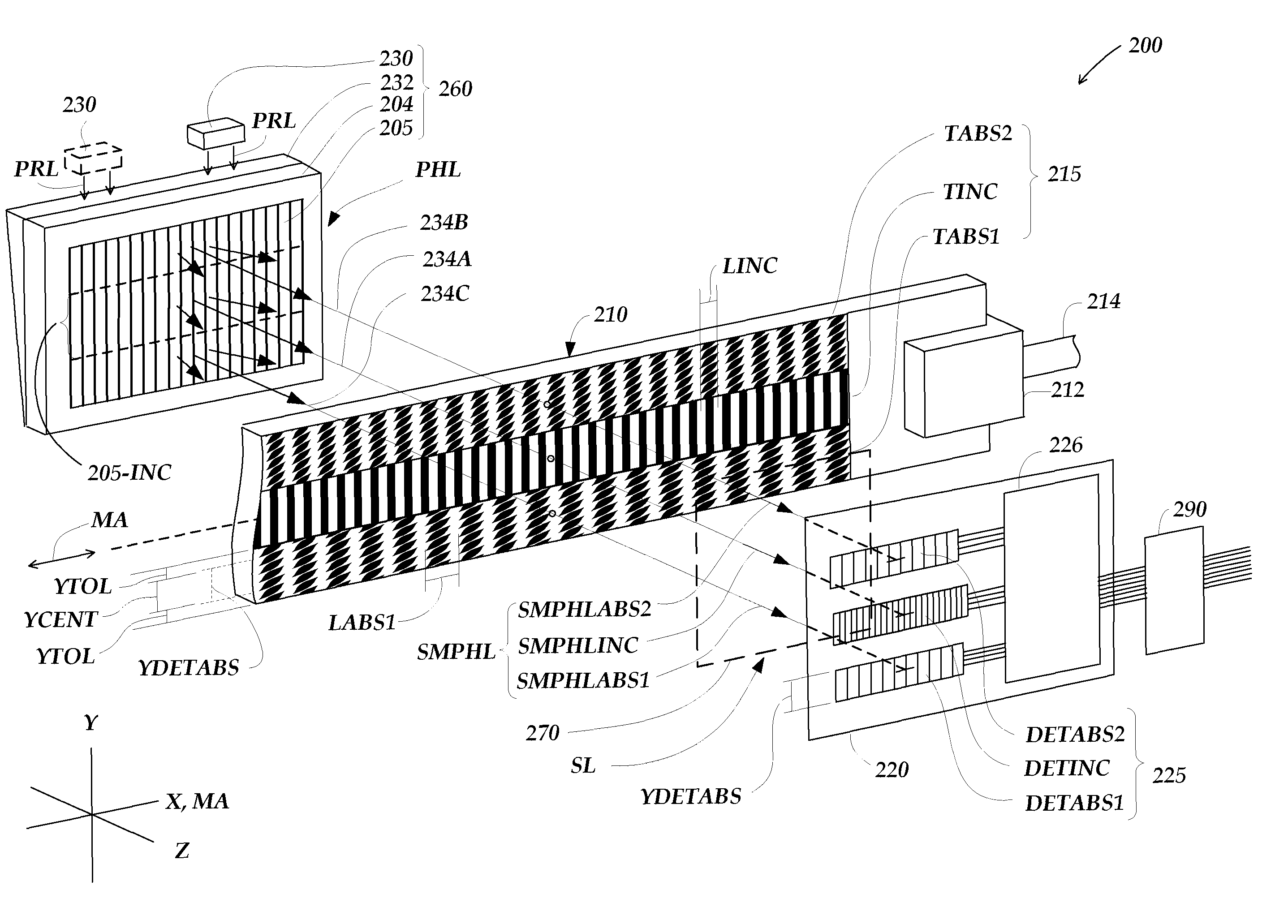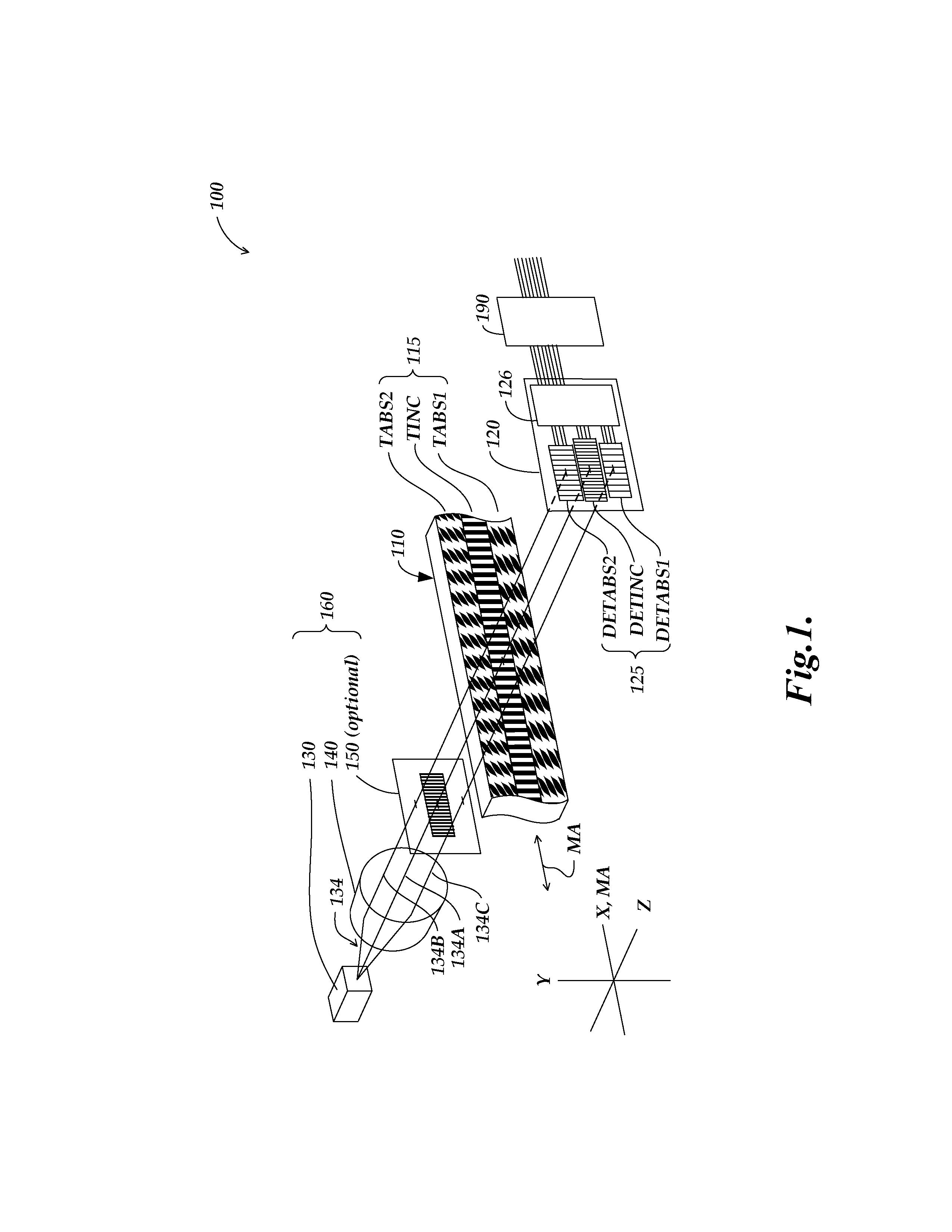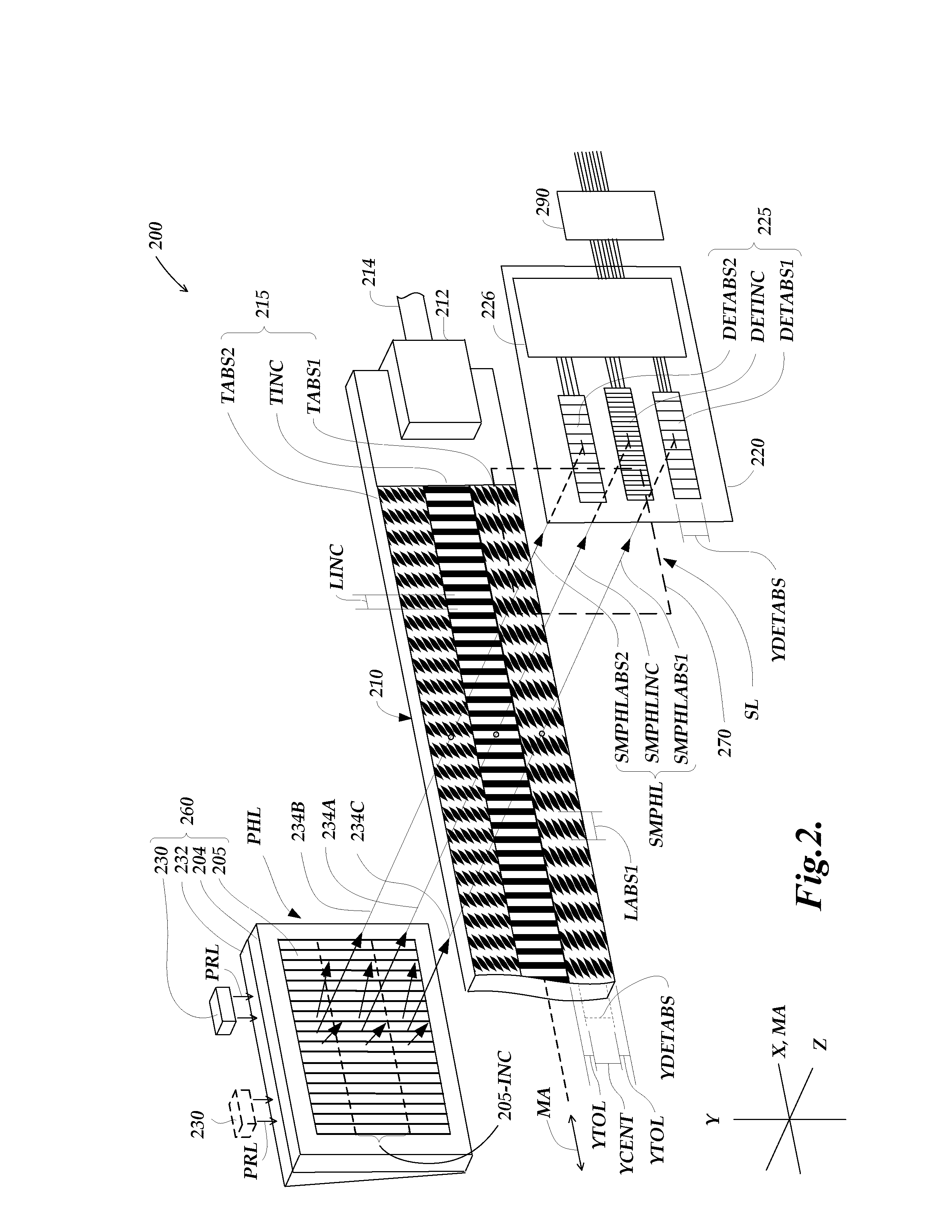Displacement encoder including phosphor illumination source
a technology of displacement encoder and phosphor illumination source, which is applied in the direction of measuring devices, converting sensor output optically, instruments, etc., can solve the problems of preventing the configuration of displacement encoders from being made more compact along the optical axis, and reducing the accuracy of displacement signals, so as to facilitate compact devices
- Summary
- Abstract
- Description
- Claims
- Application Information
AI Technical Summary
Benefits of technology
Problems solved by technology
Method used
Image
Examples
first embodiment
[0031]FIG. 2 is a partially schematic exploded diagram of an encoder configuration 200 utilizing a light source that includes a phosphor to provide illumination to a scale pattern that produces a corresponding spatially modulated light pattern on a detector in accordance with this invention. Except for the use of the phosphor to enhance the illumination uniformity and eliminate the requirement for an illumination lens, the components and operating principles of the encoder configuration 200 may be approximately similar to those of the encoder configuration 100 of FIG. 1, and may generally be understood by analogy. For example, 2XX series numbers in FIG. 2 that have the same “XX” suffix as 1XX series numbers in FIG. 1 may designate similar or identical elements, which may function similarly, except as otherwise described or implied below.
[0032]As shown in FIG. 2, the encoder configuration 200 includes a scale element 210, detector electronics 220 which is connected to signal generati...
second embodiment
[0047]FIG. 3 is a diagram of a cross-sectional end view of an encoder configuration 300 utilizing a light source that includes a phosphor area to provide illumination to a scale pattern, and FIGS. 4A-4C are diagrams of top and bottom views of selected components at different layers within the encoder configuration 300 of FIG. 3, with alignment along the Y direction approximately maintained throughout all these figures. In one embodiment, the encoder configuration 300 may be similar to the encoder configuration 200 of FIG. 2, and elements having 3XX reference numbers may generally be analogous to elements having 2XX reference numbers in FIG. 2, and may generally be similarly understood and configured in an analogous manner, unless otherwise indicated by description or context. As shown in FIG. 3, the encoder configuration 300 includes a scale member 310 including a scale pattern 315, a circuit assembly 395 (e.g., a printed circuit board and associated signal processing circuitry) inc...
third embodiment
[0054]FIG. 5 is a diagram of a cross-sectional end view of an encoder configuration 500 utilizing a light source that includes a phosphor area to provide illumination of a scale pattern, and FIGS. 6A-6D are diagrams of top and bottom views of selected components at different layers within the encoder configuration of FIG. 5, with alignment along the Y direction approximately maintained throughout all these figures. In one embodiment, certain of the components of the encoder configuration 500 may be similar to their counterparts in the encoder configuration 300 of FIGS. 3 and 4A-4C, and elements having 5XX reference numbers may generally be analogous to elements having 3XX reference numbers in FIGS. 3 and 4A-4C, and may generally be similarly understood and configured in an analogous manner, unless otherwise indicated by description or context. As shown in FIG. 5, the encoder configuration 500 includes a scale member 510 including a scale pattern 515, a circuit assembly 595 (e.g., a ...
PUM
 Login to View More
Login to View More Abstract
Description
Claims
Application Information
 Login to View More
Login to View More - R&D
- Intellectual Property
- Life Sciences
- Materials
- Tech Scout
- Unparalleled Data Quality
- Higher Quality Content
- 60% Fewer Hallucinations
Browse by: Latest US Patents, China's latest patents, Technical Efficacy Thesaurus, Application Domain, Technology Topic, Popular Technical Reports.
© 2025 PatSnap. All rights reserved.Legal|Privacy policy|Modern Slavery Act Transparency Statement|Sitemap|About US| Contact US: help@patsnap.com



